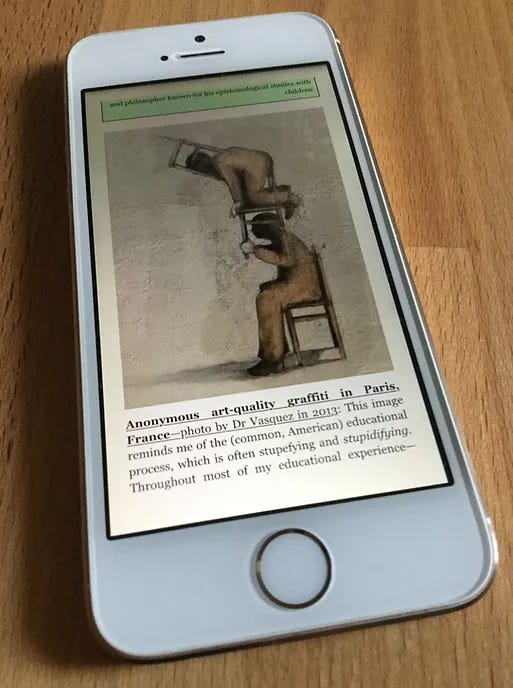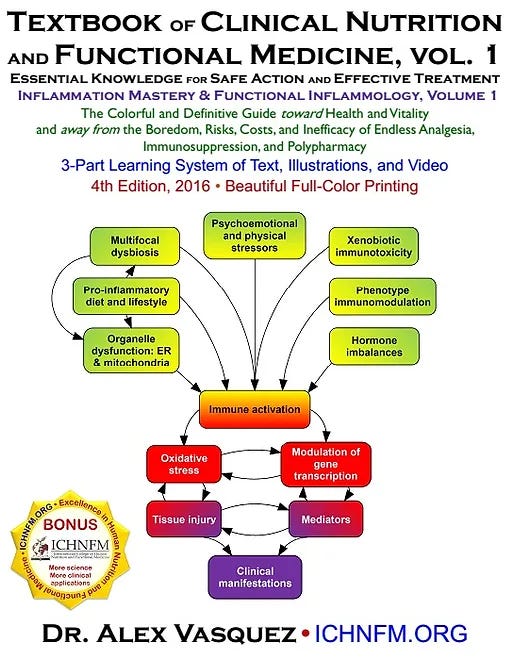Twilight of the Idiopathic Era: Dawn of New Possibilities in Health and Healthcare
Archived here from Naturopathy Digest in 2006; minor edits were made in 2010 and 2014 when the article was republished at https://www.ichnfm.org/reprint-idiopathic
Among the perplexing paradoxes that exist in healthcare is coexistence of our adoration of allopathy for its “scientific method” along with the description of most chronic diseases as “idiopathic.” If the allopathic use of the scientific method were so adroit, then why are so many conditions described as having “no known cause”? Is the scientific method inadequate, or is the allopathic lens incapable of bringing disease causation into focus? Perhaps a third option exists: that some groups—namely the medical profession generally and the pharmaceutical companies specifically—benefit by convincing us that most diseases have “no known cause” and that therefore the best that doctors and patients can hope for is additive and endless pharmaceuticalization of all health problems. When the cause of our health problems is “unknown”, we are disempowered, and we must depend on “experts” and those who have "the cure" to help us and save us. When the causes of our problems are known, we are empowered to take effective action. Certainly, some groups have financial and political interests in keeping us as professionals and as patients confused and disempowered.
The End of the Idiopathic Era
A stark contrast exists between primary research literature and the “facts” that are selectively reported in medical textbooks and which are used to buttress “conventional wisdom” and the resultant status quo. While I have been aware of this contrast for many years, the divergence was impressed upon me with renewed vigor during the preparation of a recent article[1] and the completion of my 2006 textbook Integrative Rheumatology, now Inflammation Mastery 4th Edition (sample with photos).[2] Arthritis in general and autoimmune and rheumatic diseases in particular are frequently described as “idiopathic” and as having “no known cause” by most mainstream medical books like The Merck Manual and Current Medical Diagnosis and Treatment; these contentions are inconsistent with the abundant and diverse research showing that—rather than being idiopathic—most chronic musculoskeletal disorders are multifactorial. When a disease is codified as idiopathic, doctors lose their incentive to look for and treat the causes [plural] of the disease because the codified conventional wisdom has already stated that “The cause [singular] of the disease has not been identified.” Similarly, patients are convinced to give up their hope of ever being cured; they chose what appears to be the second best option: lifelong medicalization. In these instances, acceptance of the codified conventional wisdom benefits doctors and patients by freeing them of the obligation to think, to mobilize their consciousness; the price paid for this exoneration from consciousness is perpetuated unconsciousness and drug dependence for doctors and patients. Being told by powerful institutions and ensconced authorities that “There’s nothing else you can do, and nothing more to think about” lulls us all into apathy and conformity at the price of our individual and collective lives and consciousness.
Multifactorial—Not Idiopathic
Let’s look at psoriasis and rheumatoid arthritis as two shining examples of idiopathicity. If one looks into a standard medical textbook, one sees that these conditions have no known cause and therefore the lifelong prescription of anti-inflammatory medications is presumptively justified. On the contrary, if one spends a few days in any medical library, one can find articles that point to the causes of these diseases and which then illuminate the path (and paths) by which doctors and patients can arrive at authentic improvement or permanent cure. Most patients can be cured of psoriasis, and a large percentage of rheumatoid arthritis patients can avoid the complications and medicalization associated with their disease, particularly if the causes of their condition are treated early. We now know that most autoimmune diseases are caused by and/or perpetuated by chronic sustained infections, phenotypic/epigenetic immune imbalances, a proinflammatory lifestyle, hormonal imbalances, and exposure to chemicals and metals that cause immune dysfunction/activation. When the cause(s) of the disease is treated, the disease has the potential to be cured, provided that it is treated comprehensively and hopefully before the onset of irreversible damage. When the disease is cured, lifelong medicalization becomes unnecessary, the patient is free to fully resume his/her life, and doctors are liberated from their roles as drug representatives and can resume their proper positions as healers and creative free-thinking individuals.

Image caption: With the experience of three doctoral programs, I've had the opportunity to observe not simply the "healthcare educational process" but to actually see advantages and disadvantages and the insights and blindspots of various health paradigms (ie, chiropractic, naturopathic, osteopathic and medical) and educational processes (ie, small private schools driven by tuition vs large multicollege universities with apparently endless funding from state, government, alumni, and industry). Throughout these processes and always with the intention to not only learn and master the educational material itself but to also appreciate the differences in delivery and paradigm, I have observed how various healthcare paradigms have their strengths and their intentional and chronic vacancies. Within these experiences, I have often asked, "What is the strategic advantage being sought via the intentional ignorance being perpetuated by this method of instruction?" By chance, I happened upon a small painting while jogging the streets of Paris in 2013: the image depicts a seated person holding a chair over his/her head while another person kneels in the above seat, likewise fit with a seat on his/her head. The image depicts confusion and stagnation, similar to the experience that many students are force to endure during their educational processes, which should be providing the opposite experiences: clarity and activation. From my early reading of Emerson's famous essay The American Scholar, I have always held the passionate view that education should be specifically intended to activate (not pacify: to make passive) the minds and bodies of students and to create great people and great citizens, not simply test-takers, degree-seekers, and people who are expert in one topic to the sacrifice of all other topics and contexts.
We don't have to remain ignorant: We can train ourselves to be complete people and competent scholars of "excellence and intelligence and skill" (quoted from Bach's classic short story "Jonathan Livingston Seagull"):
Asserting an empowered stance toward disease prevention and treatment carries implications beyond those for the doctor and the patient. These implications also point to new ways of living and stewarding the world. When we look at a disease like Parkinson’s disease and then determine that it is idiopathic, then nothing happens to change or shape our view of the world, our place in it, and the interconnected components of health and disease. Everyone agrees that that clinical manifestations of Parkinson’s disease result from the death (or perhaps impairment?) of dopaminergic neurons. From the allopathic perspective, the disease is idiopathic, while from an integrative naturopathic perspective, we see Parkinson’s disease as a multifaceted disorder associated with defective mitochondrial function, impaired xenobiotic detoxification, and occupational and/or recreational exposure to toxicants, particularly pesticides. These associations align to create a new model for the illness based on exposure to neurotoxicants such as pesticides[3] which are ineffectively detoxified[4] and then accumulate in the brain[5] and induce mitochondrial dysfunction[6] and resultant oxidative stress[7] which leads to impairment/death of dopaminergic neurons. Therefore, from the perspective of both prevention and treatment, the clinical approach to Parkinson’s disease should include pesticide avoidance and optimization of detoxification to prevent the cellular accumulation of neurotoxic mitochondrial poisons. The plan must also include optimization of nutritional status, antioxidant capacity, and mitochondrial function.[8] Further, if our goal is to reduce the societal prevalence of Parkinson’s disease, then we must begin living in better harmony with nature and thinking of ways to reduce our use of pesticides and herbicides, the chemicals that are consistently shown to cause premature neuronal death and which are increasingly pervasive in our home, work, and outdoor environments.
The Dawn of New Possibilities in Health and Healthcare
The time is now past when credible physicians can assert that most diseases are “of unknown origin.” The truth is that we already have access to the information we need to help our patients. The truth is that we can often offer our patients the probability of cure rather than lifelong and endless prescriptions for symptom-modifying drugs. These truths imply that healthcare and our systems of healthcare delivery must change, because the pharmaceutical and medical icons that stand before us were built upon feet and legs of clay and interspersed lead. We stand at the dawn of a new era in healthcare—one in which patients with chronic diseases in general and autoimmune diseases in particular—have a tangible and authentic opportunity to regain their health.
"Education should be as broad as man. Whatever elements are in him that should foster and demonstrate. If he be dexterous, his tuition should make it appear; if he be capable of dividing men by the trenchant sword of his thought, education should unsheathe and sharpen it; if he is one to cement society by his all-reconciling affinities, oh! hasten their action! If he is jovial, if he is mercurial, if he is a great-hearted, a cunning artificer, a strong commander, a potent ally, ingenious, useful, elegant, witty, prophet, diviner--society has need of all these. ... Our culture has truckled to the times--to the senses. It is not manworthy. If the vast and the spiritual are omitted, so are the practical and the moral. It does not make us brave or free. We teach boys to be such men as we are. We do not teach them to aspire to be all they can. We do not give them a training as if we believed in their noble nature. We scarce educate their bodies. We do not train the eye and the hand. We exercise their understandings to the apprehension and: comparison of some facts, to a skill in numbers, in words; we aim to make accountants, attorneys, engineers; but not to make able, earnest, great-hearted men. The great object of Education should be commensurate with the object of life. It should be a moral one; to teach self-trust; to inspire the youthful man with an interest in himself; with a curiosity touching his own nature; to acquaint him with the resources of his mind, and to teach him that there is all his strength, and to inflame him with a piety towards the Grand Mind in which he lives." Ralph Waldo Emerson
[1] Vasquez A. Nutritional and Botanical Treatments against “Silent Infections” and Gastrointestinal Dysbiosis. Nutr Perspect 2006; January ichnfm.academia.edu/AlexVasquez
[2] Vasquez A. Integrative Rheumatology. First Edition. 2006, now Inflammation Mastery 4th Edition Click here to see the cover; Click here to see the first few pages, including the table of contents and index (size: 6 MB); Click here for a larger sample with photos (size: 43 MB)
[3] Ritz B, Yu F. Parkinson's disease mortality and pesticide exposure in California 1984-1994. Int J Epidemiol. 2000 Apr;29(2):323-9
[4] Menegon A, Board PG, Blackburn AC, et al. Parkinson's disease, pesticides, and glutathione transferase polymorphisms. Lancet. 1998;352(9137):1344-6
[5] Kamel F, Hoppin JA. Related Articles, Association of pesticide exposure with neurologic dysfunction and disease. Environ Health Perspect. 2004;112(9):950-8
[6] Parker WD Jr, Swerdlow RH. Mitochondrial dysfunction in idiopathic Parkinson disease. Am J Hum Genet. 1998;62(4):758-62
[7] Davey GP, Peuchen S, Clark JB. Energy thresholds in brain mitochondria. Potential involvement in neurodegeneration. J Biol Chem. 1998;273(21):12753-7
[8] Kidd PM. Parkinson's disease as multifactorial oxidative neurodegeneration: implications for integrative management. Altern Med Rev. 2000 Dec;5(6):502-29
Appreciating Strategic* Stupidity (*Potemkin = façade, coverup) [PDF, images, video]
Today’s post will detail the concept of strategic/Potemkin stupidity and follows yesterday’s post that provided a connoisseur’s introduction to Gaslighting, Dogwhistling, Stupidity, Naiveté, and BS. Understanding this concept {strategic stupidity} and gaining ability to articulate it, identify it, and describe it provides us with an empowering liberation…





![Appreciating Strategic* Stupidity (*Potemkin = façade, coverup) [PDF, images, video]](https://substackcdn.com/image/youtube/w_728,c_limit/dBktY__3Wls)
Brilliant observations Dr.